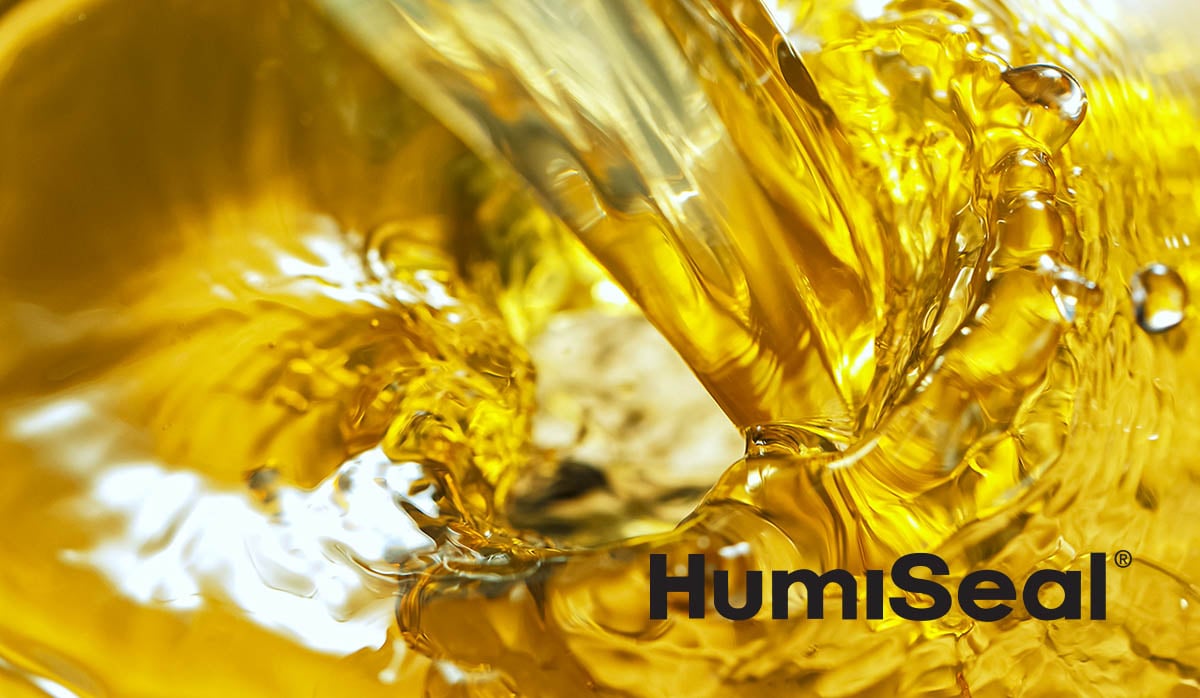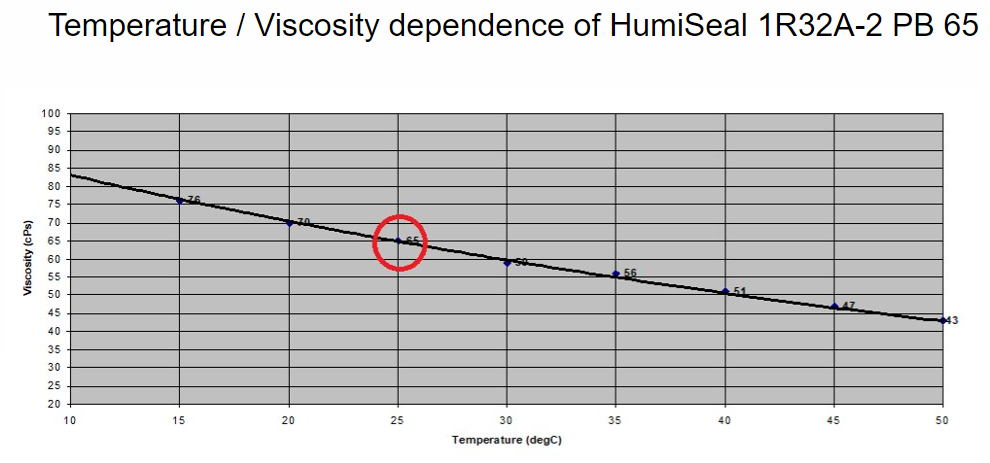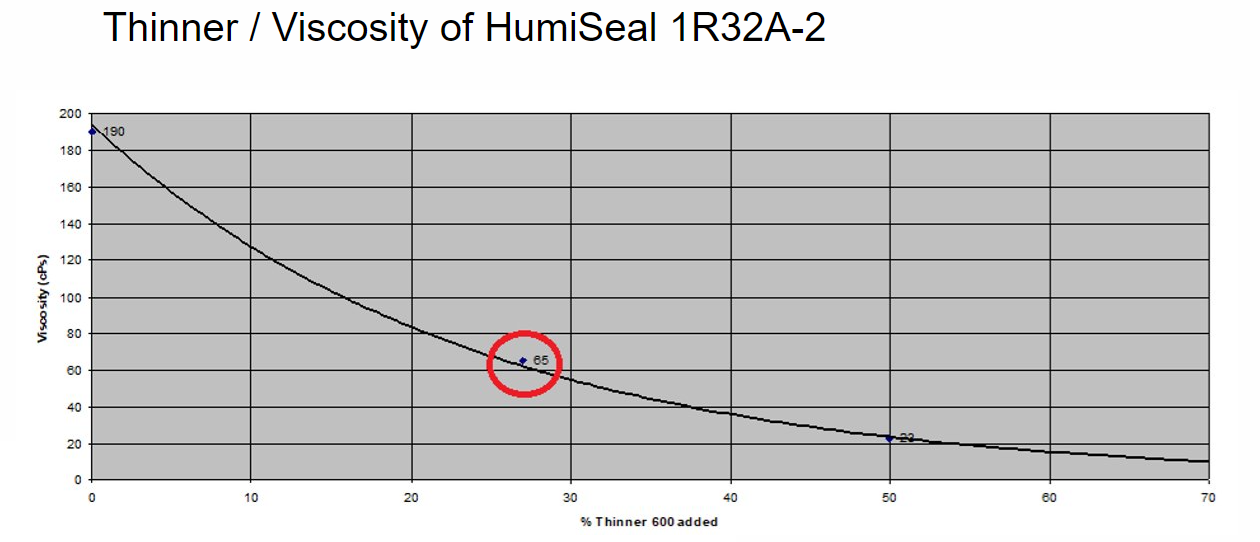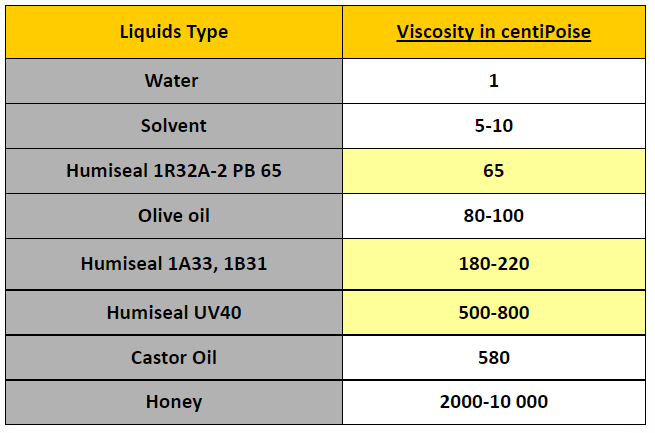
This is the first in a short series on material viscosity, in which we will review what it is and how to measure it. We will start with the definition of viscosity. Viscosity is the internal friction of moving fluid and a measurement of the resistance of a fluid deformed by shear stress. It is measured in centiPoise. The lower the number, the less viscous the material, as can be seen by this comparison chart: starting with water at 1 cPs and ending with honey at anywhere between 2,000 – 10,000 cPs.
Temperature and Viscosity: How Temperature Affects Viscosity
To explain the effect of the temperature of viscosity, we will use one of our standard preblend materials: 1R32A-2 PB 65. This will show why it is important to measure viscosity at the correct temperature. As can be seen by the graph, for every 5°C increase in temperature, there is a five cps drop in viscosity.

When testing a batch material or developing a preblend, HumiSeal uses 25°C as the standard temperature condition. For viscosity measurements on-site, it is important to ensure the temperature and humidity conditions are within the range established by the user of the material (e.g. target temperature ± 1.5°C). This will increase the accuracy of the measurements taken.
Dilution and Viscosity: How % of Thinner Affects Viscosity
In the next chart, we look at the relation between solvent addition and viscosity. In this example, we are using 1R32A-2 conformal coating—with a starting viscosity around 200 cps—and our thinner type 600 (this will make 1R32A-2 preblend 65).
It should be remembered that each type of thinner will reduce the viscosity of material at different rates. Therefore, always compare with the HumiSeal thinner compatibility chart or with the HumiSeal technical department before preblending a HumiSeal product.

As can be seen by the chart, the first 30% addition of thinner has the greatest effect on viscosity. So always be careful when diluting material.
Related article: Thinners for Conformal Coatings
Methods of Measuring Viscosity
Finally, in this edition, we’ll look at two methods for measuring viscosity. For quality control, we always recommend a viscosity meter. Viscosity is measured with a spindle emersed in the material, rotated at a constant speed with a digital readout. This method provides the best accuracy.
Watch: How to Measure Viscosity using a Flow Cup

The second method is using a flow cup. As the name indicates, the time it takes for a known volume of material to flow through a predetermined hole is measured in seconds, then referred to in a cross-reference chart to find viscosity. But more on this in the next edition of this series.

Be sure to check out our part 2 in our Conformal Coating Viscosity Explained series!
As a supplier of electronics protection polymers and coatings, Chase Corporation and our employees can help you with an unbiased approach to evaluating your application and process. We’ll show you how to maximize efficiency, minimize cost, and improve product reliability. Our outstanding manufacturing and technical support groups can provide your organization with reliable global supply, unmatched quality, and superior technical support.










